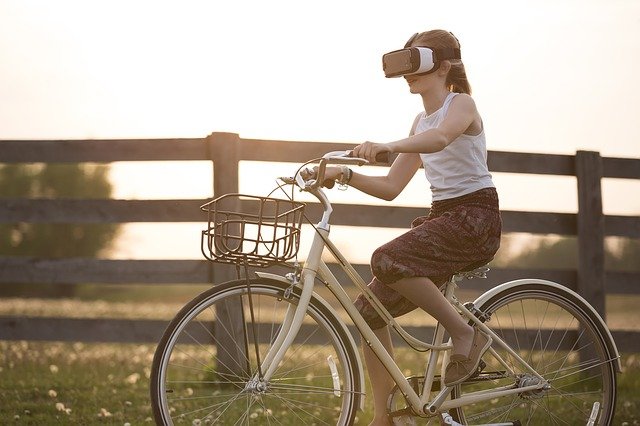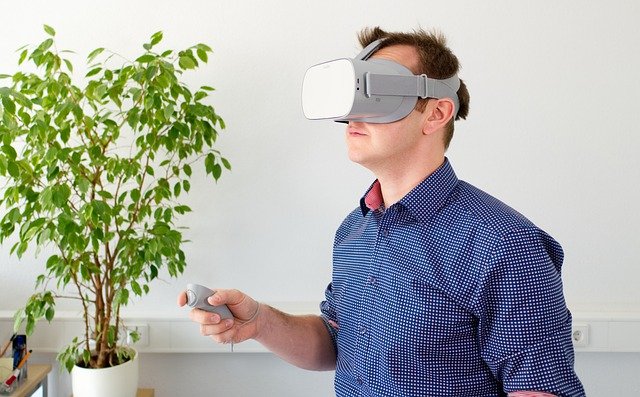Will we be able to point at a virtual Uber , visible only to us, and order a ride any time soon?
The use-cases for Augmented Reality are clear, but when will we see them as products?
getty
Trying an augmented reality product feels a bit like listening to your kid playing the violin. You are so full of hope as they pick up the instrument and position it next to their cheek. They lift their tiny hand, and the bow is about to touch the strings; you can almost hear the symphony shoot out into the air and fill the room with vibrant, emotional, and confident sounds.
Alas, the reality is somewhat different.
The notes are off, the timing is not there, and the tune is nothing to be recognized. Is it something we’ve heard before? Or is she practicing a new piece? There is no knowing.
Still, it would be best if you kept a straight face, congratulated them on their effort, and booked an appointment at the ear doctor to check when a hearing loss would hit in.
I love the promise of Augmented Reality, also known as a “technology that superimposes a computer-generated image on a user’s view of the natural world, thus providing a composite view.” It is of course, different than Virtual Reality, which is “computer-generated simulation of a three-dimensional image or environment that can be interacted with in a seemingly real or physical way by a person using special electronic equipment, such as a helmet with a screen inside or gloves fitted with sensors.” Augmented Reality mixes digital imagery and information with the real world, while Virtual Reality is a complete immersion in a digital world. Not to take anything from the magic of Virtual Reality, the possibilities of Augmented Reality are truely endless. Imagine looking at your phone, and three additional informative and reactive augmented screens pop up around it. One shows your calendar, the other the zoom call you’re on, and the third a chat window.
Or consider walking to a shop, and every item has a bit of exciting graphics hovering next to it; what’s on sale? People who bought this piece also bought that other complimentary item. It’s like mashing the excitement, user experience, and knowledge we enjoy online onto the physical world.
The potential of AR is so great that some believe it can take on and disrupt the mobile phone, possibly even replacing it altogether. Consider the billions of dollars companies such as Apple, Facebook, and Google (links lead to examples) are betting on this technology. It is clear that at some point, all of this tech pushing will get us beyond any tech limitations. It will be possible for you to read this article as it hovers in mid-air above your virtual coffee table.
In theory
In practice, Augmented Reality is kind of similar to your kid’s violin concerto. To experience AR you need to wear cumbersome and expensive headgear. The field of view is limited, and the augmentation is not as exciting as you might expect. It is a tall order (even for today’s super-fast computational devices) for a wearable device to understand your head position relative to the environment and the direction and focus of your view. But wait, we are not through yet; there’s more. Add to that the need to identify the objects in the environment around you and generate relevant information. And last, overlay it in real-time in front of your eyes. Will we be satisfied with images hovering in mid-air? Not likely. We want augmented visuals to interact with the environment around us. We want the text to appear in front or behind store shelves. We want graphs to align nicely on conference tables, and in a high-speed chase game, we want to see a car crash into the living room wall. There are also ethical, and privacy challenges to overcome. A tall order indeed.
Rethinking Flying Cars
When thinking of AR, my thoughts drift to flying cars. You know, Jetsons-style if you’re from that age group, “Minority Report” if you’re a bit younger, the second “Blade Runner” movie if you’re a toddler. Flying cars have been on the wish list for a long time. But there is ״the failure,״ in the way we describe this magical product: “a flying car.”
Let’s consider someone else who can regularly fly, birds, for example. Most birds have a minimal ability to run. And that is because they have wings. If one can fly, why would it bother walking or running anywhere? A quick flap-flap of the wings, a short flight, and you’ve arrived at your destination. On the same note, if you had a machine that could fly you to the shopping mall, drop your kids at school, or land you at work, why on earth would you want it to drive as well??
So it is a natural evolution of things that all attempts of getting cars to fly end up as a bad example of something between a bad car and a worse airplane. It is great to see that new endeavors of “flying cars” head in the direction of large human-carrying drones, not a car and a drone, just a large drone. Some innovations can evolve from other solutions. But as the case of “flying cars” demonstrates, a fresh start is a must in other cases. For AR to succeed, we need a fresh start. Let go of some of the items on the wish list and make it shorter. Simpler.
Why do professional photographers shoot in black and white?
Recently I took on a new hobby: photography. And not just any photography, but shooting only in black and white. Why you may ask, would anyone choose to ignore the wonderful world of color? The short answer is “too much information.” Color photos are beautiful but are also an information overload. There is just too much information packed in a frame. When you look at B&W photos, it is a minimalistic experience —a conscious choice of removing information and focusing on the essentials. If color photos are a novel, B&W photos are a tweet.
Flying cars? B&W photography? What does that have to do with Augmented Reality?
When we think of AR we need to consider that this technology may be a “flying car.” Flying cars are a highly desirable dream; who would not want to take off their balcony to any destination? Free ourselves from roads, traffic lights, and traffic jams? But wanting a flying car and having one are very different.
Similarly, AR may be one bite too large from the technology apple. Is AR around the corner? Only if the corner is a city away. The technology gaps are just too significant.
Another big challenge to consider is the AR experience. Will it be in “color” or “black and white?” Are we contemplating a rich or minimal experience?
Much of what we see in AR demos is rich in “color” and experience. From completely augmented reality environments that look closer to a VR experience to whales breaking through floors and tsunami waves engulfing the viewer. But these are just demos. The Reality of Augmented Reality is that it can not yet deliver such experiences. So how do we start climbing up the AR ladder?
>> This inspirational video is from 2016, but gives a good impression of what an overly rich AR experience may look (and feel) like. I’m sure you will agree, it’s taking the experience too far:
If we consider the next best thing we have at our disposal, the mobile phone, we can pick up some directional ques. When we were all newbies to the mobile phone experience, an end users’ unofficial competition took place at every office and school. Who is the first to find the next cool app? Phones burst to the sim (pun intended) with “one use” apps. Over time we realized the distracting downside of apps and even social networks. Now that we are all expert mobile phone users, we use our phones more, with fewer apps.
We moved from “Color” to “B&W.” Clear the distraction, and you can better enjoy the experience.
To help bridge the tech gap preventing AR from hitting the market, essentially positioning it as a “flying car,” we could benefit from taking a “B&W” minimalist approach.
Instead of winning by “wow,” which most AR demos shoot at, let’s win by effectiveness and utility, which end-users need daily. The tech challenges may also reduce with simplicity, and the corner we need to turn will arrive sooner.
(>> video break): If the above video is an example of overusing AR, the example below is undershooting AR. While this Xiami product is a triumph in miniaturization, it only displays simple notifications. Do they justify wearing a device all day?)
Product Managers are well familiar with this approach. Things need to be simple, or simply they will not be.
If we find the less complicated use cases in which AR is the clear winner, better even than the unbeatable mobile phone, we may realize that these use cases also match the current state of technology.
Instead of overpromising (flying car!) let’s go back to the basics and innovate in reverse. Start with what users need. Today, build simple PoC’s and MVPs that leverage scalable technology and deliver winning AR solutions to the market.
It’s what my kid’s violin teacher should have done. Start with a more straightforward song. As the end-user, I would have greatly appreciated it.
Source: https://www.forbes.com/sites/hodfleishman/2021/10/26/when-will-augmented-reality-become-real/



